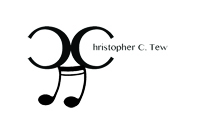Form, Shape, and Continuity
I tend to work in traditional forms: sonata-allegro (the first movement of most symphonies and sonatas and many concert overtures, containing an exposition with at least two melodies in contrasting keys, a development of elements from those melodies, and a recapitulation that repeats the melodies in the home key); rondo (the fast concluding movement of many symphonies, especially those of Haydn and Mozart, with one main melody that is repeated between several contrasting melodies); song form (the slow movement of many symphonies and sonatas, with a beginning melody, a contrasting melody, and a repeat of the beginning melody); and minuet/scherzo (the third movement of many symphonies and sometimes present in sonatas, with a beginning section in two parts, a contrasting middle section in two parts, and a repeat of the two-part beginning that is usually shorter. Sometimes the scherzo is expanded to five sections instead of three).
These forms usually provide sufficient variety for my musical ideas – traditional forms for traditional ideas. More importantly, they provide control and restraint. Since I use recognizable melodies and motives, these forms insure that the material is presented in an understandable, orderly manner and with enough repetition to become familiar.
On occasion I reverse the order of the recapitulation’s melodies in a sonata-allegro composition. Often I incorporate motives from an initial melody in subsequent sections or develop motives through basic variation in subsequent sections. Perhaps too often I insert additional development passages that expand later sections or transfer motives from early movements to subsequent movements.
I dislike hearing and try to avoid writing episodic music, discontinuous music that stops and starts without transitions or obvious purpose, music that has no clear connection between passages.





